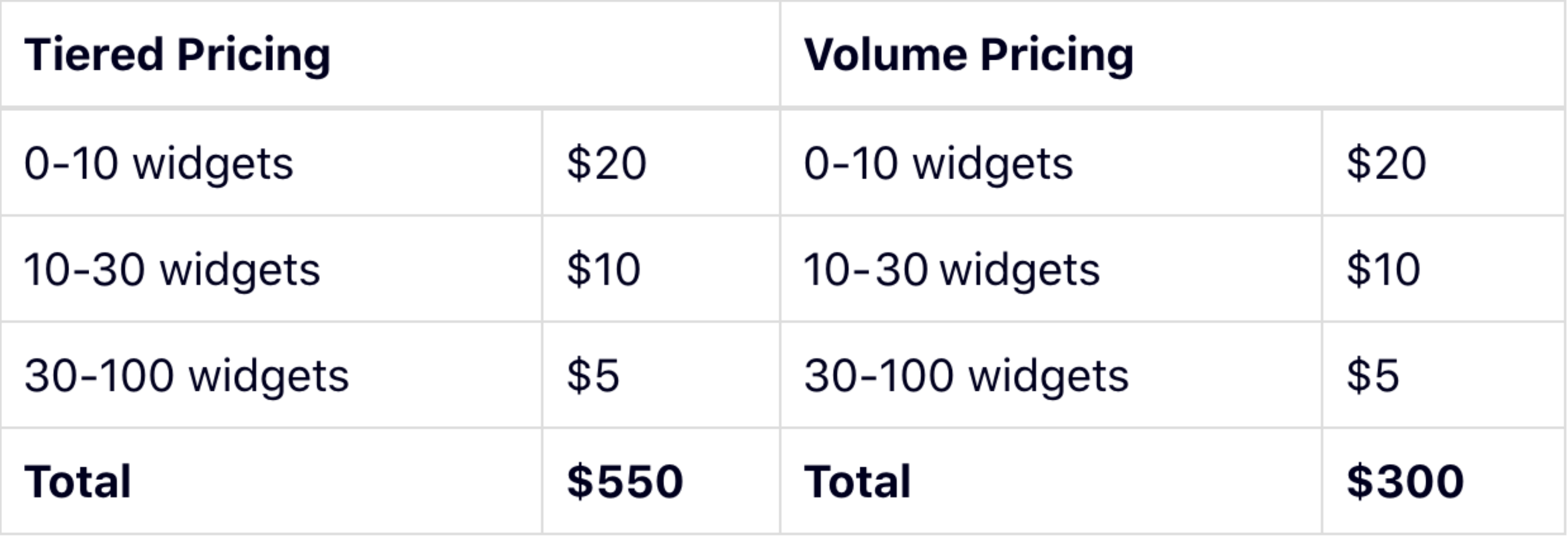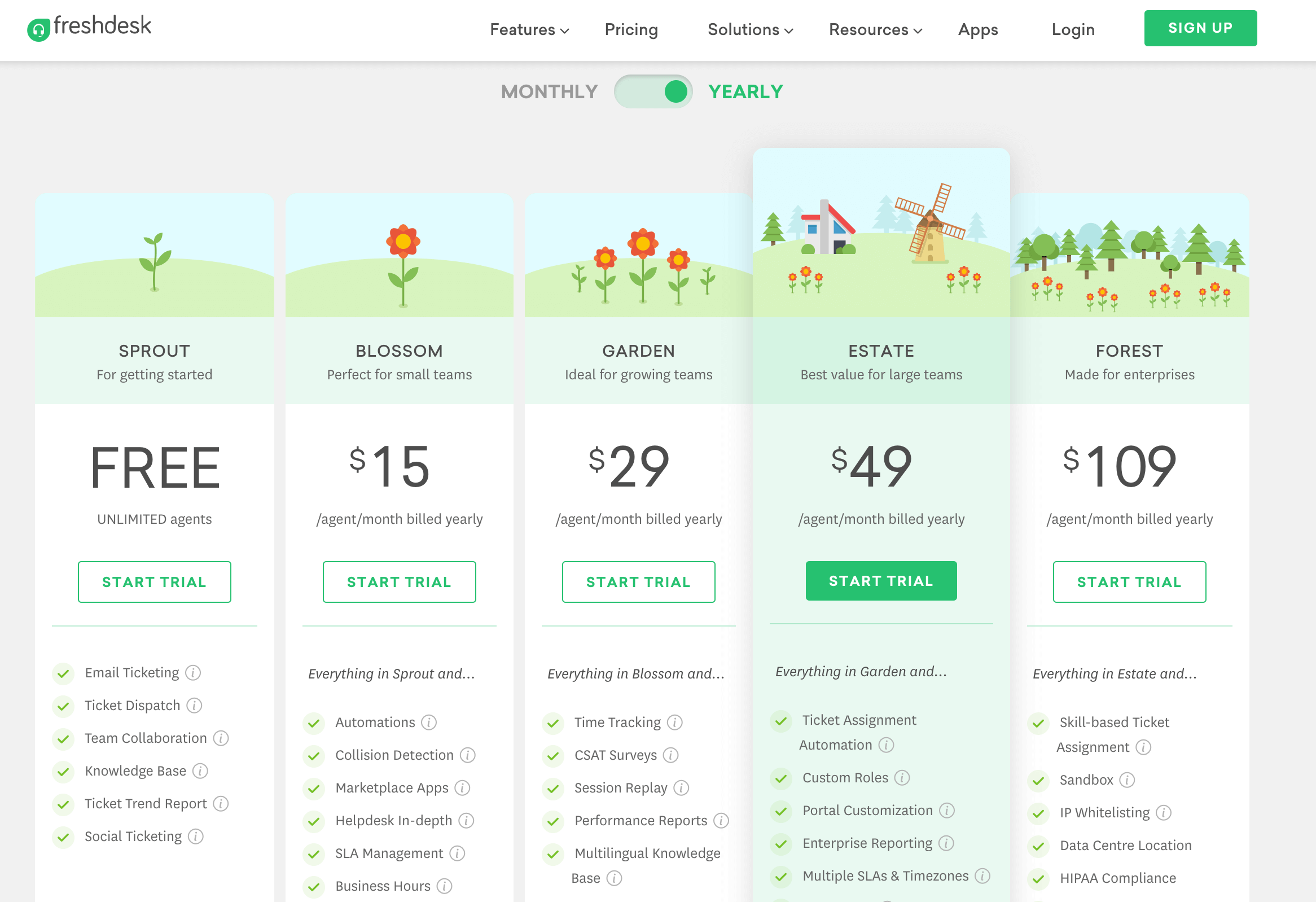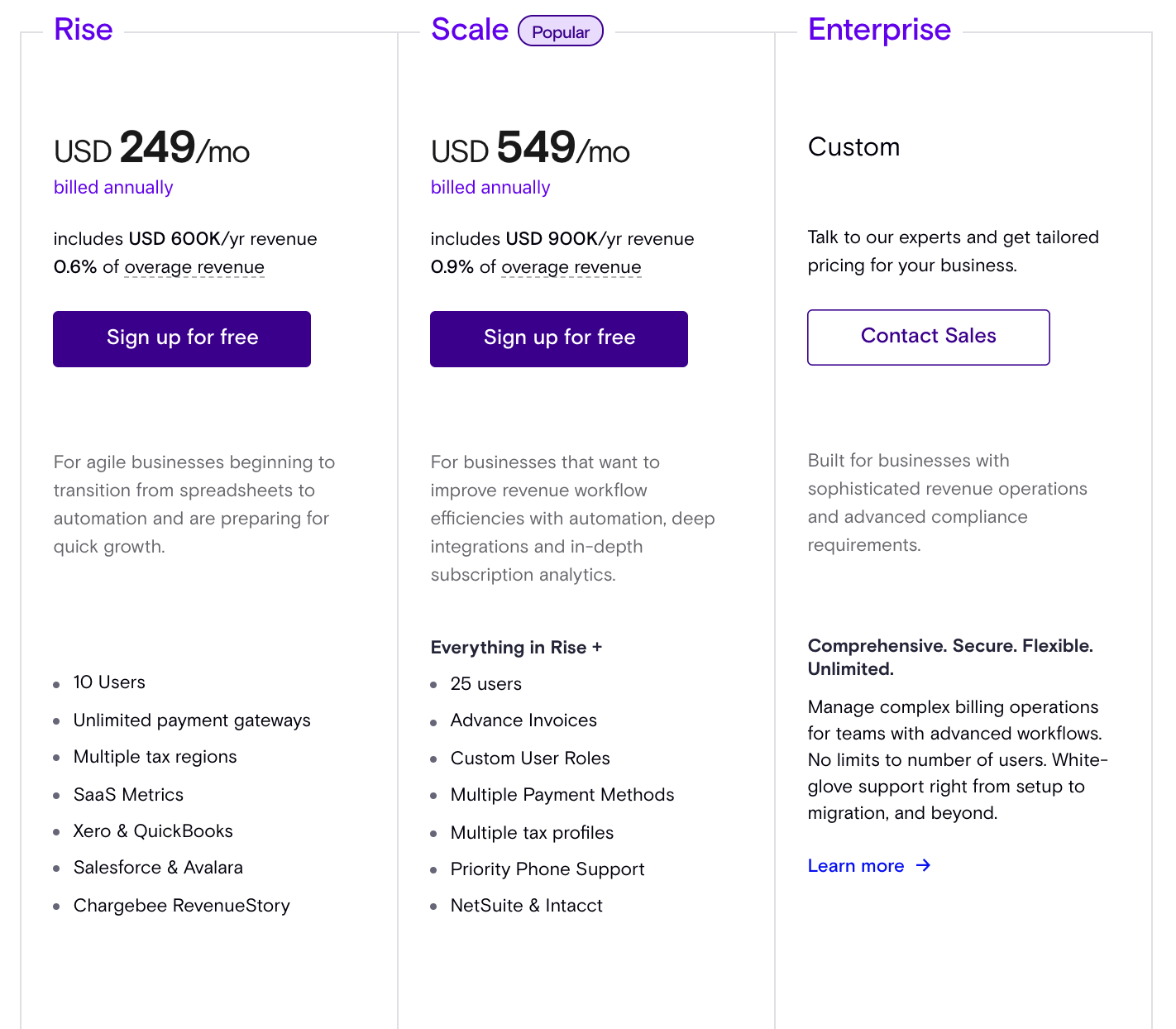PRODUCT
SOLUTIONS
- BY INDUSTRY
- B2B SaaS
- eCommerce
- E-learning
- Publishing
- BY BUSINESS SIZE
- Startup
- ScaleUp
- Enterprise
- BY BUSINESS MODEL
- Self-serve
- Sales-driven
CHARGEBEE RETENTION
Pricing
What is Tiered Pricing Model?
Tiered pricing as a strategy is used by companies to provide their products/services at different price points by limiting or expanding the features/functionalities corresponding to each tier price.
Now that we’ve got the definitions out of the way, let’s dive a little deeper.
Tiered Pricing as a Model:
Tiered pricing as a model works best for businesses that sell seats, licenses, widgets, etc., The tiered model is a great way to incentivize your customers. It helps you push your customers to buy more and qualify for discounts.
Before we get into the details of the Tiered Pricing Model, we need to understand the difference between Tiered and Volume Pricing as both of the pricing models are often used interchangeably. While the former helps you generate higher revenue and the latter enables you to acquire a lot of customers.
Tiered vs Volume Pricing:
Tiered model: The price per unit you’re selling is within a particular price range. Once you fill up one tier you move to the next.
Volume Pricing: The price of all the units you’re selling is within the set price range.
Still difficult? Let’s understand the difference using a simple example.
Suppose you’re a business who is selling widgets. Here is how your prices would vary if you either opt for a tiered pricing model or a volume pricing model.

How do you calculate pricing for the Tiered model?
You’ve sold 60 widgets to your customer. In a tiered pricing model, you calculate your total like this:
[($20x10) + ($10x20) + ($5 x 30)] = $550
You move to the next tier only when one tier is completely filled.
Whereas, in a volume pricing model, the total is calculated as ($5x60) according to the total number of widgets bought which falls under the 30-100 widgets price range.
Tiered Pricing / Price Tiering as a Strategy:
Many companies in the SaaS space most commonly have three tiers to differentiate the price points and some, even more. The main idea behind a tiered pricing strategy is that your prices and features should be tailored according to the various needs and use cases of the customers you’re selling to.
You will have to be careful about deciding the value metric and the cost for the respective tiers. Your value metric with which you set your prices can be either quantitative, usage, feature sets or based on how your customers perceive the product. The number of tiers should allow you to capture the market by targeting different market segments without losing out on revenue.
Let’s look at how you can structure your pricing model based on tiers.
Tier Pricing Structure (Popular Three-Tier Strategy):
Basic Tier: The basic model will provide your customers with the essential features at affordable pricing. This model will basically allow your customers to start using your product and solve the problem they face.
Standard Tier: The standard model is usually a combination of the basic features along with some advanced features. This will give your customers benefits that will save money for them and as well as bring in a lot of revenue for your business.
Premium Tier: This model is usually made for big enterprise customers or for customers who know what they want and how will they benefit from all the advanced features your product offers. The Premium tier will be priced more and will bring you the highest return for every unit sold.
Examples of Tier Pricing Strategy:
Freshdesk, a cloud-based customer service platform, provides the most efficient and user-friendly Help Desk features available. So here is how they have priced their services in incremental tiers based on different feature bundles so that they can attract a customer base from small businesses to enterprises. As the business scales, they’ll be able to upgrade the plans based on their needs.

Let’s see another example of tiered pricing based on usage. Chargebee is a subscription billing software that powers end-to-end billing for SaaS businesses. Below, is the image of the pricing plans. The features are bundled together in different tiers at different price points. The customer is charged based on their usage of that particular plan.

The main goal of your pricing strategy should be able to maximize the lifetime value of the customer. You should make sure that you don’t overwhelm them with a lot of pricing options or worse confuse them. Therefore, having different pricing tiers to appeal to every one of them and allowing them to choose the one best suited for their needs is important.